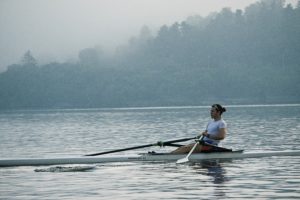Resilience training and adaptability through Sport Psychology
Resilience is best defined as the process of adapting well in the face of adversity, trauma, tragedy, threats or significant sources of stress. This may occur in highly stressful athletic competitions or in life events such as family and relationship problems, serious health problems or workplace and financial stressors. Resilience means “bouncing back” and making positive adaptations in response to difficult experiences.

A recent article about innovative performance research in WorldRowing.com offers support for a balance between coaching instruction and allowing trial and error/adaptive problem-solving. Fortunately for coaches, feedback still has an essential place in performance skill development. “Our results do not suggest that external feedback or coaching is bad for skill learning,” says lead author Ryan Roemmich. Instead, the authors suggest that “coaching – while it can drive faster changes in movement – is not particularly effective for accelerating adaptive learning.”
Mixing Learning Strategies Enhances Resilience
The best method, according to Roemmich, may be a blend of both. “Many studies have suggested that providing intermittent feedback drives the longest lasting improvements in skill,” he says. “Others have also looked at the practice structure itself and found that variable practice – or practicing different movements in short, alternating intervals – can also lead to longer lasting improvements.”
“The beauty of adaptive learning,” says Roemmich, “is that it lasts even after the stimulus driving the learning has gone.” That is the key to building resilience in that the learning experience can have durability. It can be carried by the performer, applied as needed, without outside instruction and real time feedback. It recreates a more effective performer as they can achieve under less than ideal or anticipated circumstances .
Looking back to our rowing example of added load, while the boat feels heavy and the movement different at first, once the rower’s movements adapt, the boat feels incredibly light when the load is returned to normal (e.g. half boat rowing followed by full boat rowing).
Roemmich says, “the adaptive learning has lasting effects because a well-established movement pattern has been subconsciously recalibrated. Because it’s subconscious, that recalibration lasts even upon return to a normal environment.” The resilience or ability to bounce back under less than ideal circumstances increases the chance for optimal effectiveness. To use a new common piece of jargon, it builds an element of emotional intelligence identified as “self-regulation“.